Comorbidities, Racial Disparities, and Geographic Differences in Asthma

Asthma management is becoming increasingly personalized, making it crucial to evaluate the various comorbidities and socioeconomic factors affecting patient care. Asthma is no longer simply understood as the typical allergic asthma requiring treatment with corticosteroids. There is an evolving distinction between allergen-specific T helper 2 (Th2) and non-Th2 asthma.1 In Th2 asthma, eosinophilic inflammation plays a key role, whereas in non-Th2 asthma, neutrophils are the primary inflammatory cells involved.1 Asthma masqueraders, such as vocal cord dysfunction, chronic obstructive pulmonary disease, eosinophilic granulomatosis with polyangiitis, etc, must be considered in the differential diagnosis, and asthma comorbidities, such as upper airway cough syndrome, gastroesophageal reflux, depression, and anxiety, have to be actively sought out and managed appropriately.2
Racial, socioeconomic, and geographic characteristics are also key patient factors that affect asthma symptoms and control, quality of life, and asthma-related morbidity and mortality. Assessing and understanding the multiple factors that affect each patient is crucial in the optimal management of asthma symptoms, and also preventing exacerbations, which in turn lead to accelerated loss of lung function.
1
-
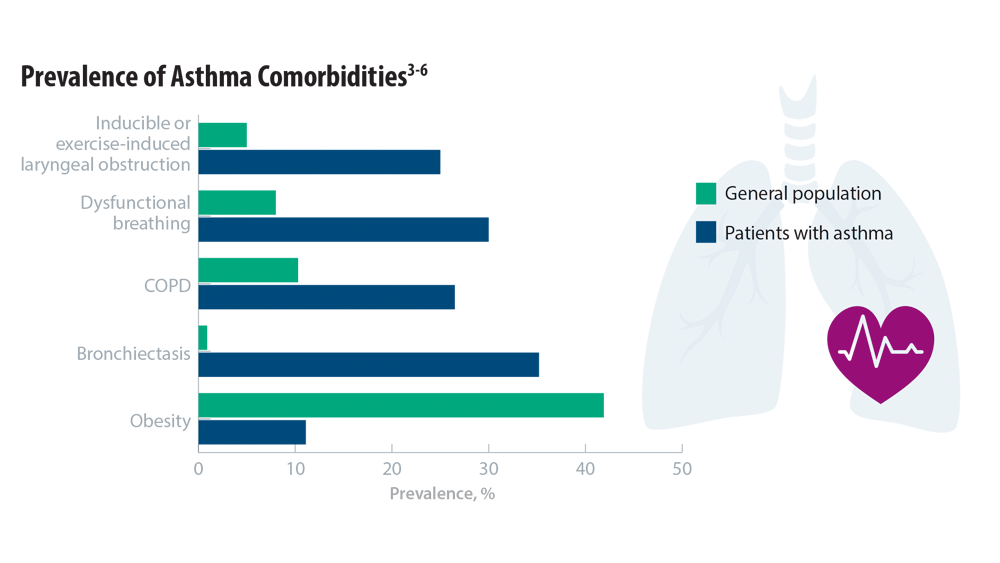
-
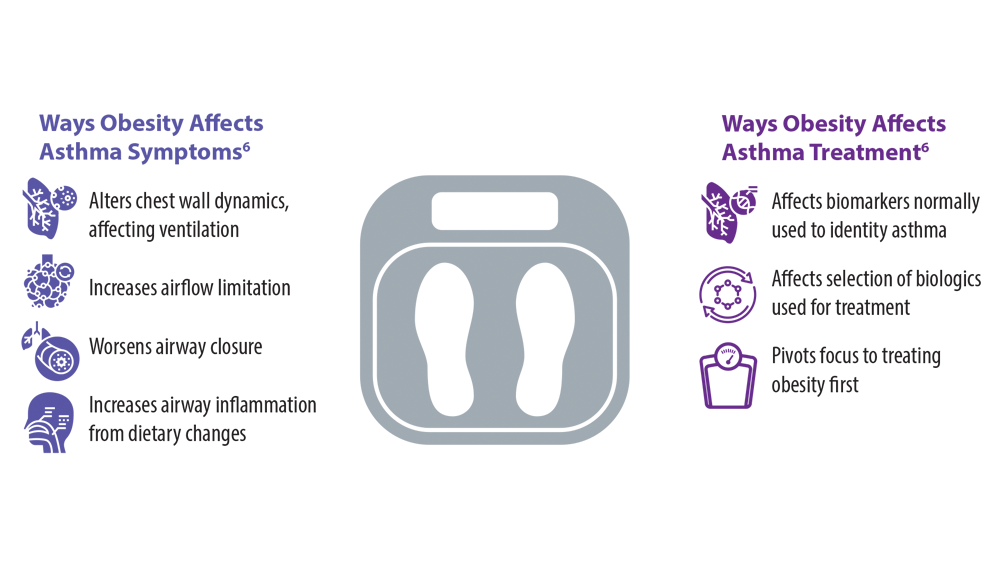
-
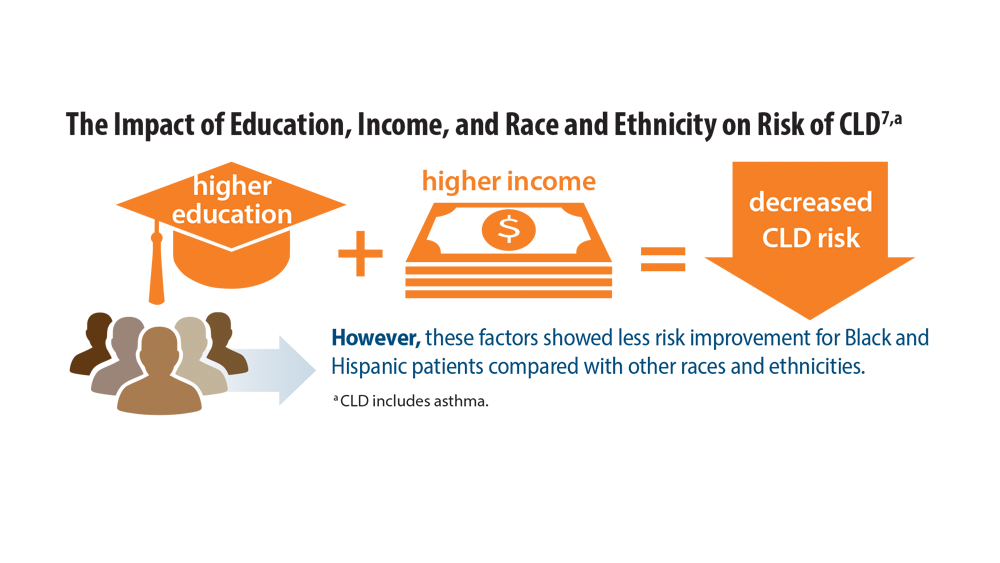
Race, ethnicity, socioeconomic, and geographic factors significantly affect the quality of life and asthma control in most patients. These considerations should be actively reviewed and managed as part of holistic asthma care. A study of 25,659 American adults found that level of education and income had varying impact on the risk of chronic lung disease (CLD), including asthma, in different racial and ethnic groups.
-
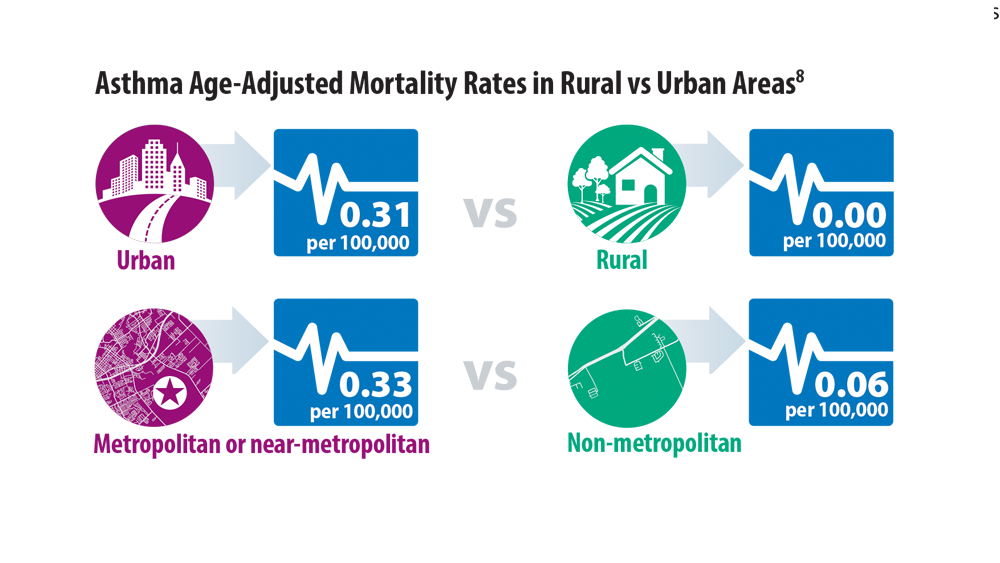
Geographic location has also been shown to affect the incidence of asthma.8 Different states and types of communities have varying degrees of asthma prevalence and mortality.
-
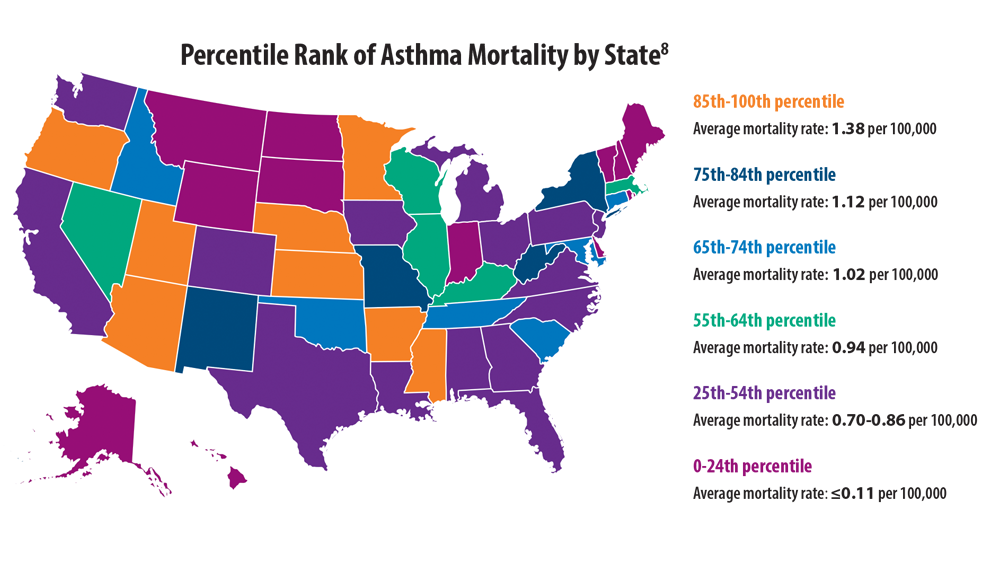
Adapted from Annals of Allergy, Asthma & Immunology, 128(1):11, Bleecker ER et al, Mapping geographic variability of severe uncontrolled asthma in the United States: Management implications, ©2022, with permission from Elsevier.

